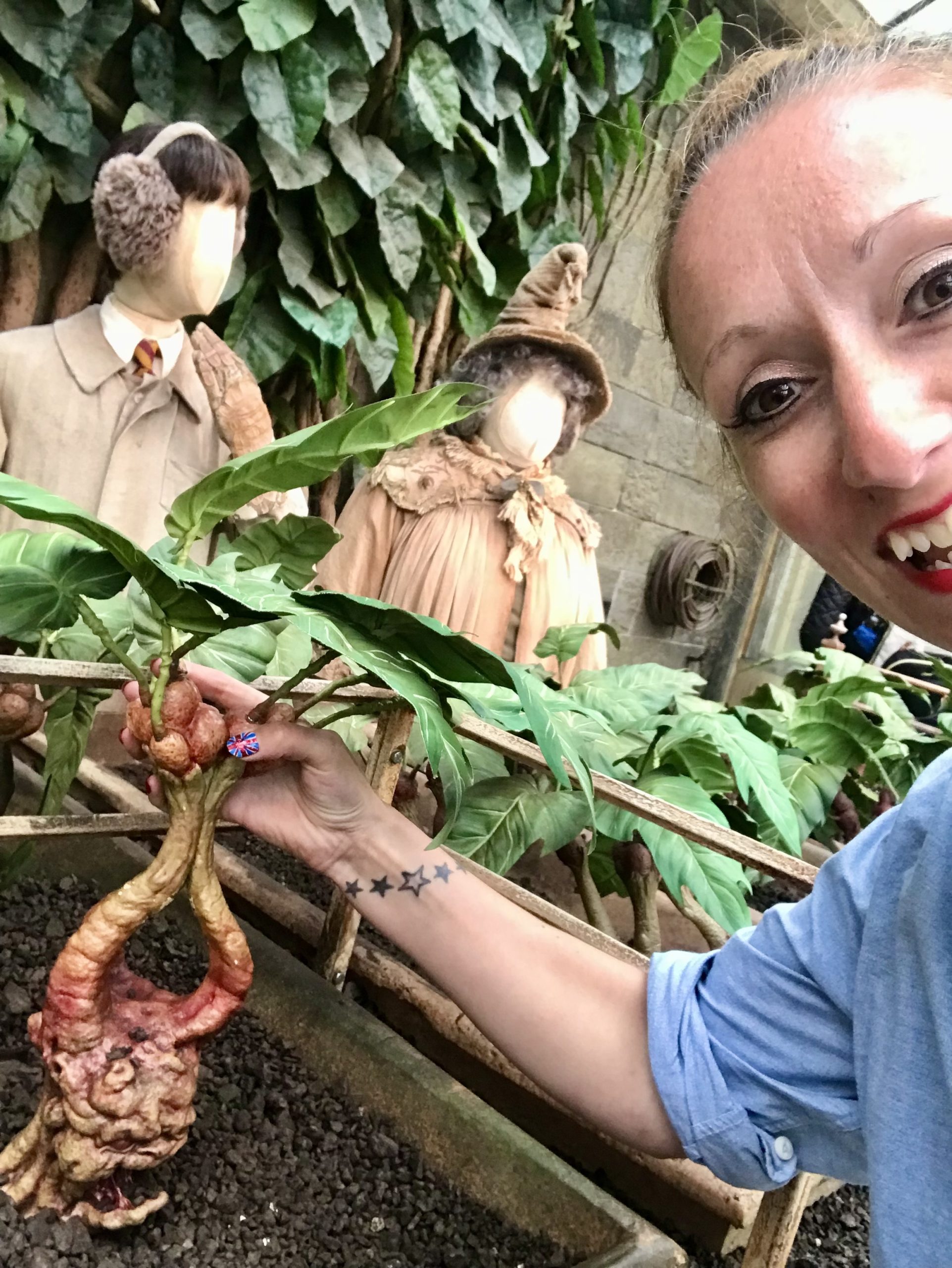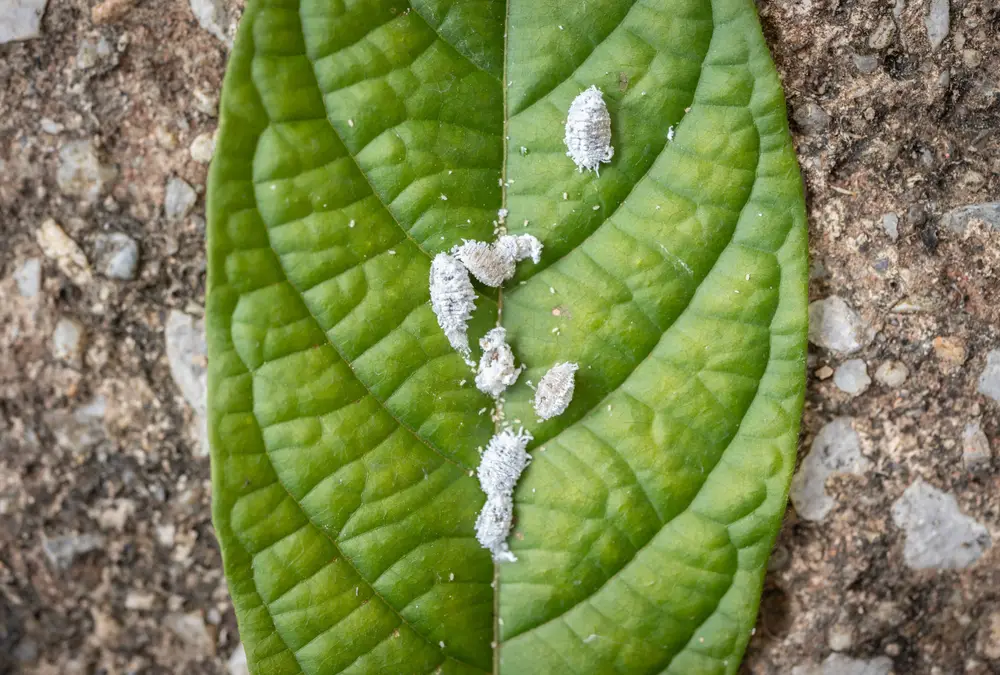Mealybugs are small insects that are notorious for infesting a variety of plants.
Whether it’s pests found on plants or pests in the soil, dealing with unwanted insects is a problem all gardeners face. In particular, these bugs are known for their damaging feeding habits and can be found in clusters on plant stems, leaves, and fruit.
Here we will explore all about these pesky bugs including how to identify infestations, how to treat and prevent them from damaging your plants, and how to get rid of mealybugs.
Understanding Mealybugs

What Are Mealybugs?
They are soft-bodied bugs that grow up to approximately ¼ inch (0.63 centimeters) in size. There are over 2000 different types of them!
These common pests are sexually dimorphic which means the females and males look different. It is usually infestations of the females that you see on plants.
The identification of the females is often straightforward due to their distinctive appearance. They are covered in a white, waxy coating that gives them a cottony look. Sometimes they have little spikes, so they look like little white aliens! Females live approximately 1-2 months.
Males, on the other hand, have a very different appearance. They have wings, multiple eyes, and they are not covered in white wax. The males only live for approximately 3 days. Their main purpose is to mate with females before they die.
Their life cycle includes several stages:
- Eggs (up to 600 can be laid by the adult female)
- Nymphs (often yellow or pink)
- Adults
Each stage contributes to their rapid population growth, even though they only live for a short period of time. Their ability to reproduce quickly and their tendency to hide in hard-to-reach places make managing infestations challenging.
Where do mealybugs come from?
They originate from tropical and subtropical regions but they have spread to temperate areas due to global trade. Though they still thrive best in warm climates.
They travel on plants and some types can be found in the soil. It’s always advisable to inspect any new plants you bring home.
Identifying Mealybug Infestations
It is easy to spot these bugs on plants. Their white bodies stand out on green foliage. They live in colonies so once you’ve seen one – likely there will be more!
Look for white wax on the underside of the leaves. Also, orange eggs may be present if the females are already breeding.
It is best to get rid of them before they have the chance to breed extensively.
Signs Of Mealybug Damage
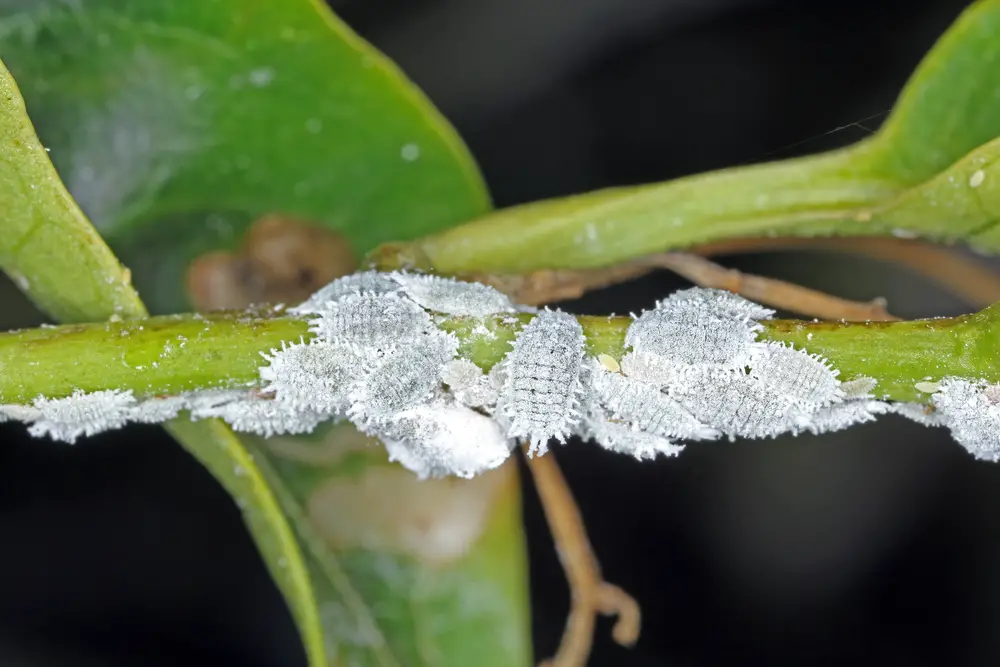
Symptoms of damage include:
- Plants losing vibrance
- Yellow, curled leaves
- Black mold
- A white waxy coating on the plant’s roots
Plants can survive an infestation if you treat it as soon as possible. Prolonged infestations will prevent the plant’s ability to produce energy, ultimately leading to death.
The Dangers Of Mealybugs To Plants
These pests drink the sap from plants. This causes stunted plant growth, yellowing leaves, and droop. By taking the nutrients plants need, infestations can cause plants to die.
They also cause damage with a sticky fluid they secret called “honeydew.” This promotes black sooty mold growth which can hinder plant health.
Leaves play an important role in converting sunlight into energy that plants use to grow. This is called photosynthesis. Without this process, plants wouldn’t be able to grow! The sticky honeydew on plants prevents photosynthesis, which is very damaging to plant health.
Are Mealybugs Harmful To Humans?
These pests do not pose a major hazard to humans. But overexposure to them can cause:
- Allergic reactions
- Nasal infections
- Eye infections
- Skin irritation
Make sure to wear gloves and avoid getting too close to the bugs when treating any bug infestations. Always wash your hands properly afterward.
People with compromised health or respiratory conditions should take extra care.
Prevention and Early Detection
Preventing infestations is crucial for maintaining healthy plants and avoiding extensive damage.
Inspect: Effective prevention starts with you inspecting plants regularly. This way you can catch any early signs of these pests before they become a significant issue.
Quarantine: If you buy some new plants for your house or garden, it’s essential to quarantine them first before you introduce them. This ensures they are not carrying mealybugs or other unwanted insects.
Hygiene: Keep your garden clean to maintain plant health and hygiene. Ensure your plants are not stressed or overcrowded. Also, make sure to clean all garden tools so no bugs are carried to other plants or areas.
Following these practices will reduce the risk of bug problems and ensure a thriving garden.
Natural Remedies for Mealybugs Control
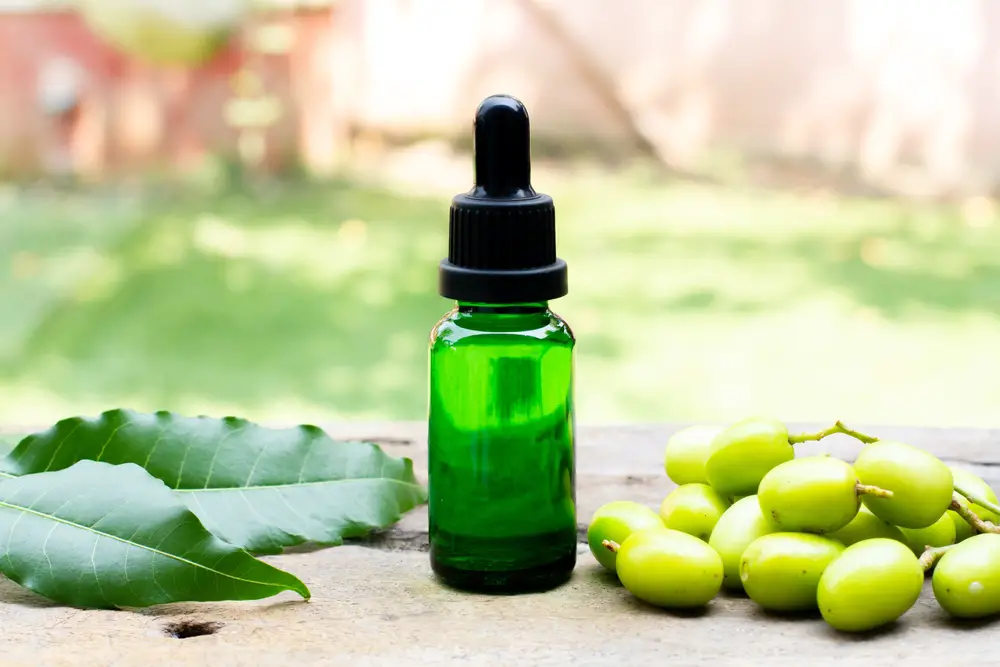
When it comes to natural remedies for bug control, several effective organic solutions can help manage and eliminate these pests. By integrating these natural remedies, you can effectively manage infestations while maintaining an eco-friendly garden.
Popular methods include using an isopropyl alcohol treatment, neem oil, and insecticidal soap.
Here are some more details on how you can effectively get rid of problem bugs using natural remedies:
Isopropyl Alcohol
Use a cotton swab soaked in isopropyl alcohol and apply it on them. The alcohol breaks down their waxy coating and kills them on contact.
Insecticidal Soap
You can use pre-made insecticidal soap or make your own. To make your own, combine mild liquid dish soap with water. This solution helps to suffocate and kill them.
Spray your insecticidal soap over the affected plants. Make sure you cover all parts of the plant and pay particular attention to the undersides of leaves. This is where they tend to hide.
Neem Oil
Neem oil is derived from the seeds of the neem tree and is a natural and organic option for pest control.
It has a significantly lower environmental impact compared to chemical insecticides. Neem oil decomposes naturally and, when used properly, poses minimal risk to beneficial insects.
It disrupts the life cycle of insects by inhibiting their feeding and reproduction.
Neem oil is also effective in treating fungal diseases so it is both an insecticide and a fungicide.
How To Apply Neem Oil
Dilute neem oil with water before application. Use it as a foliar spray or soil drench. You can buy pre-made neem oil sprays for plants.
Beneficial Insects
Mealybugs have several natural predators such as ladybugs, lacewings, and parasitic wasps. These beneficial insects feed on them and help keep their numbers under control.
Introduce these insects to your garden by planting nature plants and wildflowers.
Diatomaceous Earth
Sprinkle diatomaceous earth around your plants. This natural powder is abrasive to insects and can help manage bug populations by causing dehydration.
Diatomaceous earth offers many benefits, including:
Natural and Non-Toxic: Diatomaceous earth is made from fossilized diatoms. It is a natural, non-toxic substance that is safe for humans and pets, offering a healthier alternative to chemical pesticides.
Effective Against a Wide Range of Pests: This substance damages the exoskeletons of insects, which leads to dehydration and death. It effectively controls various pests, including ants, fleas, bedbugs, and cockroaches.
Environmentally Friendly: Diatomaceous earth does not contribute to environmental pollution, disrupt ecosystems, or leave harmful residues.
Long-Lasting Protection: Its effectiveness continues as long as it remains dry.
Easy to Apply: Available in powder form, diatomaceous earth is simple to use in different environments such as homes and gardens.
Safe for Beneficial Insects: Unlike chemical pesticides, diatomaceous earth targets pests with exoskeletons while leaving most beneficial insects unharmed. But always ensure proper use.
Manual Removal
This can work on small infestations. Manually remove them using a cotton swab dipped in soapy water or alcohol. Also, try using a soft brush to dislodge the bugs from plants.
Chemical Treatments for Mealybugs Control
Using chemical treatments to treat them is an option. But you need to consider the potential impact of using chemicals in your home and garden. Let’s break it down:
- Effectiveness: Chemical treatments can be very effective at quickly eliminating pests, especially in severe infestations. However, overuse can lead to bugs developing resistance, making future control efforts more challenging.
- Risks: Chemical pesticides can cause harm to your plants, especially if not applied correctly or if the plants are sensitive to certain chemicals. Always make sure you test a small area before use. Also, chemical insecticides pose potential dangers to humans and pets. Residue left on leaves and plants can be harmful.
- Impact On Beneficial Insects: Chemical treatments are known to harm beneficial insects that help control pests naturally. This can disrupt the ecological balance in your garden.
- Environmental Concerns: Chemical pesticides have broader environmental impacts, including pollution, harm to beneficial organisms, and disruption to ecosystems.
While chemical treatments can be effective for bugs in the short term, they need to be used with caution. A broader pest management strategy that considers the potential impacts on plants, beneficial insects, and the environment is more advisable.
Additional Tips
Here are some tips to help ensure successful management and prevent re-infestation.
- Clean: It’s essential to clean thoroughly. Make sure you remove any dead bugs, eggs, or any signs that could harbor future infestations.
- Inspect: Regularly inspect plants. These bugs can quickly return if you provide the right conditions.
- Be Persistent: Prevention requires vigilance and persistent efforts. Completely getting rid of them can take time.
- Don’t Underestimate: Avoid common mistakes such as underestimating the severity of the infestation. Make sure you treat the problem as soon as you see it.
FAQs
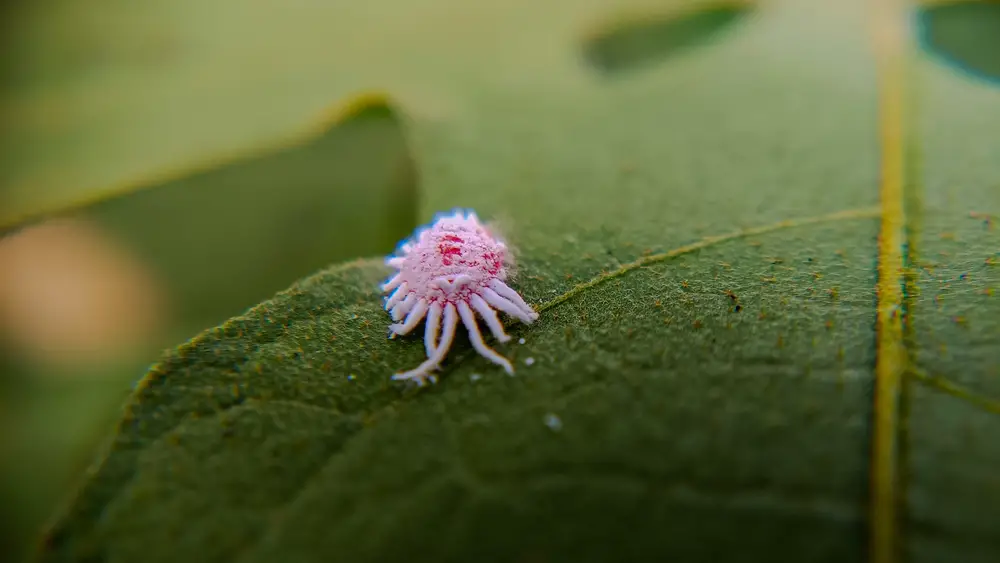
Understanding Mealybugs
How Do Mealybugs Reproduce?
They can reproduce both sexually and asexually. Sexual reproduction involves a male and female, while asexual reproduction involves a single female laying unfertilized eggs.
Can Mealybugs Fly?
Because they are sexually dimorphic their ability to fly depends on if they are a male or female. Let’s break it down:
Can females fly? No, females cannot fly. They are small, wingless insects that crawl and move slowly.
Can males fly? Yes, males have wings and are capable of flying between leaves to find females.
Are Mealybugs Dangerous To Pets?
While they are not directly harmful to pets, the toxins they release can be irritating or harmful if ingested. It’s best to avoid pets coming into contact with infested plants.
Prevention and Early Detection
How can I prevent mealybugs from entering my home or garden?
The best treatment for infestations is prevention. So, inspect new plants carefully before bringing them indoors.
Also, consider isolating new plants for a period of time to monitor for pests.
Can mealybugs spread to other plants?
Yes, they can easily spread to other plants, especially if they are in close proximity.
Also, quarantine infested plants and ensure you have removed all bugs before bringing them back with other plants.
Treatment and Control
Can I remove mealybugs By Hand?
While manual removal can be effective for small infestations, it can be time-consuming and may not eliminate all of them.
How often should I treat my plants for mealybugs?
The frequency of treatment will depend on the severity of the infestation and the chosen method. Repeat treatments may be necessary to completely eliminate the pests.
Can mealybugs develop resistance to pesticides?
Yes, they can develop resistance to pesticides if they are used repeatedly. It’s important to rotate what you use or use a variety of control methods and consider natural remedies.
Specific Plant Considerations
Are there certain plant varieties that are more susceptible to mealybugs?
In general, they like soft, nitrogen-rich plants.
Some plants, such as succulents, orchids, and houseplants with soft, succulent leaves, are particularly susceptible to infestations.
Treating them on houseplants as soon as you see them is highly advisable. This will prevent them from spreading to other indoor plants.
How do I treat mealybugs on a large outdoor plant?
For large outdoor plants, consider using a hose to spray them off. Follow up with specific treatment, depending on the severity of the infestation.
Additional Concerns
Can mealybugs damage furniture or other household items?
While they primarily feed on plants, they can sometimes crawl onto nearby surfaces. However, they do not typically cause damage to furniture or other household items.
Are there any natural predators of mealybugs?
Yes, several beneficial insects, such as ladybugs, lacewings, and parasitic wasps, can help control populations.
